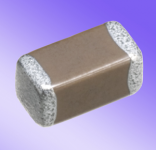uniserver
Well-known member

Is there any merit in this idea what so ever?
I'v not tried this, but i am curious if it would work, as long as the epoxy was thick enough, I feel it would create a reasonable mechanical base.
Also, I think the radial cap would be trimmed installed and then laid over on its side.
I was thinking maybe the header would be soldered with the leads bent, one forward and one backward.
Just throwing around ideas.

